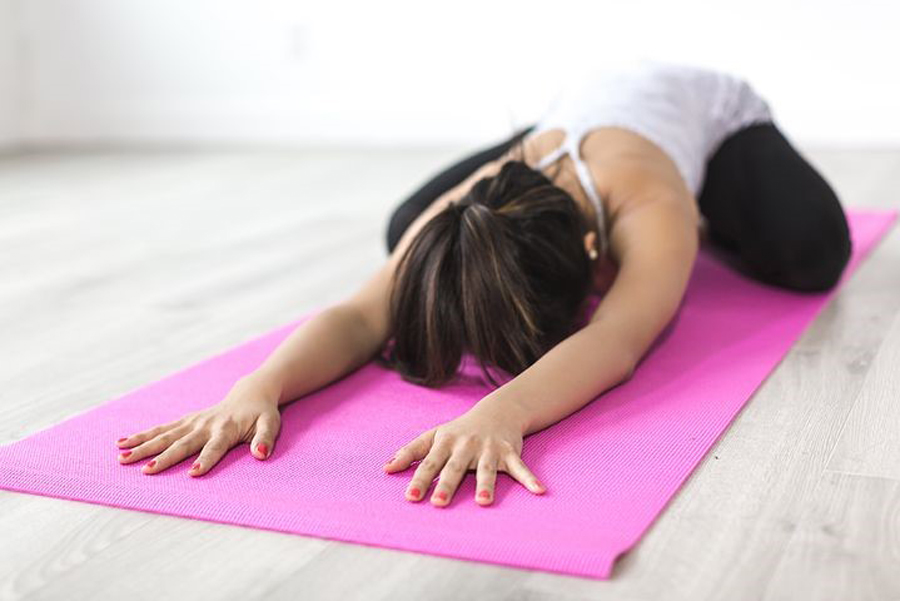
Bladder incontinence is something we think more of with the elderly. But the truth is women experience leakage quite a bit after pregnancy. But because we don’t speak on it much, it can make us feel embarrassed, panicked, and create anxiety because it’s not spoken about as much. So that’s why I decided to do something about it.
There are a number of exercises and tips that can help tighten your pelvic floor. This helps tighten up your bladder. As a result, I feel more confident about going out in public! Here are my tricks and tips.
How I Got Into Pilates, Yoga, and Exercise for my Pelvic Floor Muscles
It seems contradictory to turn to exercise. Jumping around, squeezing, and exerting ourselves is what we fear! I thought this would lead to constant leakage and having to go to the bathroom. But through strengthening my pelvic floor muscles, I gained control over this and could jump around!
What Are Your Pelvic Floor Muscles?
We have some sense of our pelvic floor muscles, but I couldn’t figure out what to squeeze when someone asked me to squeeze them. So I started trying to squeeze my abs, butt, and then my toes. Laughing, I thought, what am I doing? That’s when I realized it would be important to understand pelvic floor muscles.
Simply we can think of it as the trunk of our body. Technically speaking, they are the muscles that connect your tailbone to the pubic bone. So how do we train that? The first word was Kegels, and I thought, “oh no, a trendy thing young people do to get tight.” But soon, I realized it’s so much more than that.
We can tighten up our pelvic floor muscles by training our trunk, abs, glutes, and back. Plus there are so many other benefits to your physical and mental health. So here are some of the best exercises that have helped me!
Finding Our Pelvic Floor Muscles
Finding our pelvic floor muscles is an exercise that can help. It took me a little while, so don’t worry if you feel like you are having a hard time. One thing you can do once just to find them is to stop your pee in the middle of going to the bathroom. These are your pelvic floor muscles. But this is not the way to train them because continually doing this can lead to urinary tract infections.
Here is another way to do it.
- First, lie down on your back with your knees bent, so your feet are flat on the floor.
- Inhale, and as you exhale, squeeze your lower ab muscles as you would if you are trying to hold your pee.
- Squeeze for a few seconds, then let go. You can repeat this a few times.
Exercises That Work!
Here is what has personally been working great for me in terms of different exercises that have contributed to helping my bladder incontinence. Tip: I also used to wear protective underwear for women while I built up my strength because it’s natural to leak in the beginning.
Bridge Toe Taps
Bridge toe taps are super great for building solid glutes, legs, core, and back all at once.
- Lay on your back just as you would to find your pelvic floor muscles.
- Next, while keeping your shoulders flat on the ground, raise your hips to the ceiling with your heels firmly on the floor. Again, you should be squeezing your glutes, legs, and core.
- Alternate slightly lifting one heel off the ground at a time, tapping your toe a few inches out in front of you, and bringing it back. This exercise will isolate one leg at a time while focusing on stability from the core and glutes.
Bird Dogs
Bird dogs is a stability exercise working out all the trunk muscles again!
- Start on your hands and knees with your shoulders directly above your wrists and your hips above your knees. Your back should be flat and in line with your neck.
- Raise your left arm in front of you while raising your right leg back into alignment with your back. Bring down and switch sides.
- If this is too difficult, you can raise just your arm or just your leg and alternate all four. It’s important to squeeze your glutes and abs no matter what variation you choose.
Happy Baby Pose!
This exercise is more of a stretch which is really important when repairing injured pelvic floor muscles. Plus, your baby may get a kick out of it!
- Start on your back and draw your knees to your chest.
- Reach with your hands from the inside arches of your feet.
- Gently widen your legs keeping your knees bent as you feel the stretch throughout your groin. The stretch will intensify by pushing your legs wider and your knees closer to the ground.
Consistency Matters
For me, getting in the groove of moving around after having a baby was hard! Motivation to work on my pelvic floor muscles wasn’t the first thing I was thinking about. But once I started doing these exercises more routinely I realized how much consistency matters. It improved my life so much because I wasn’t worried about going to the grocery store or play ground any more! I felt like I finally had some control.
A lot of people don’t know where to start in terms of how much to do. That’s where we get in trouble because when we think we are not doing enough we quit or we overdo it and get hurt. Something small is better than nothing! I started doing just these exercises once or twice a day with a few rounds each. Building up the stamina to add more exercises after seeing I was getting stronger and more flexible is what keeps my motivation going!
Comments
comments